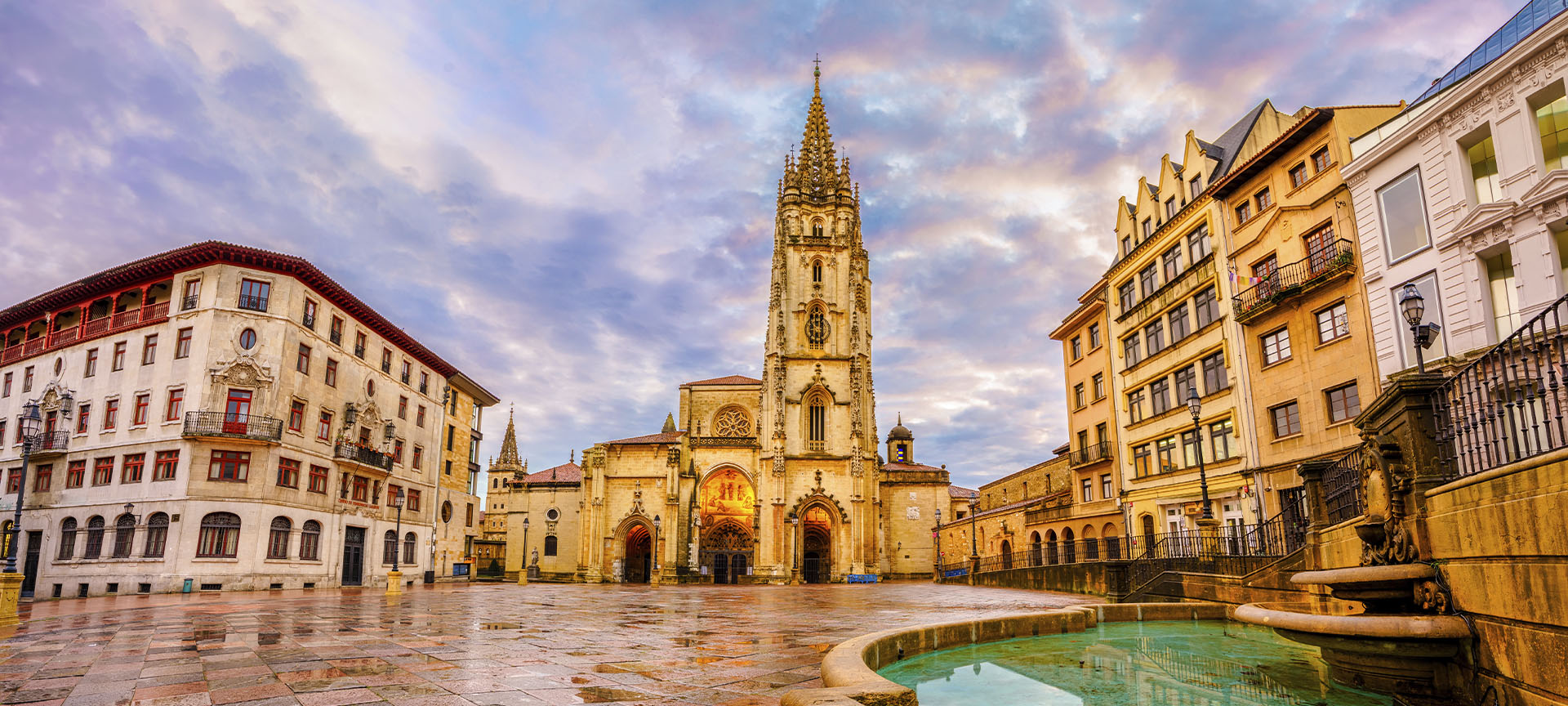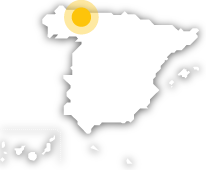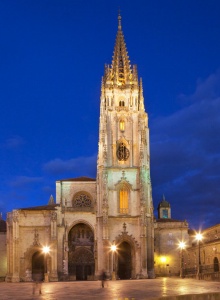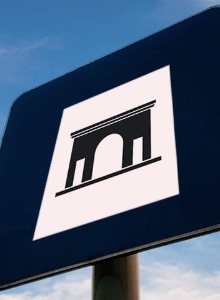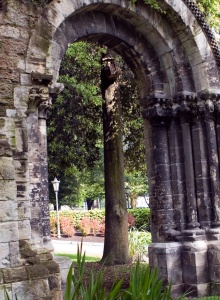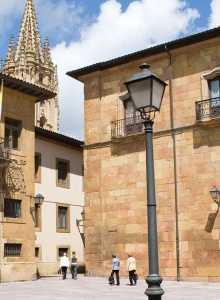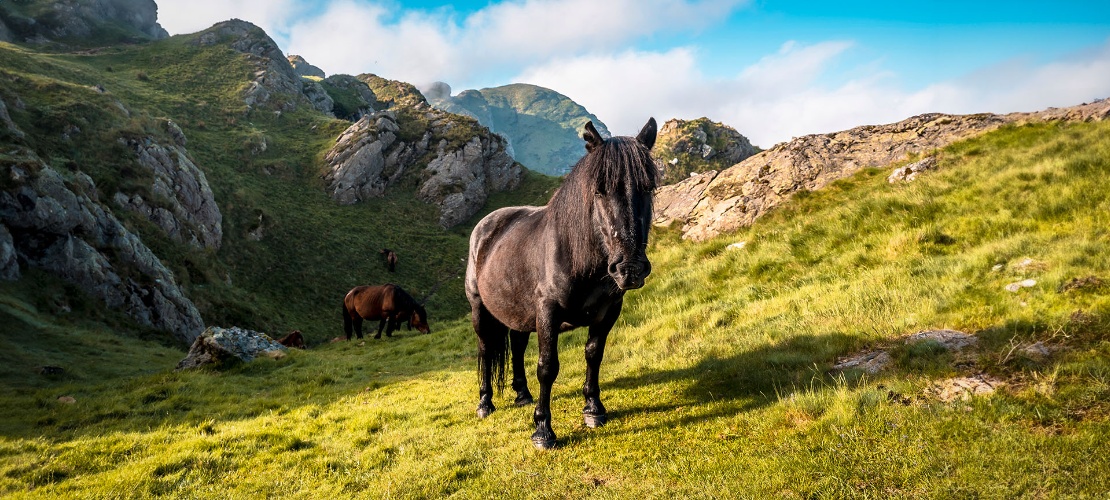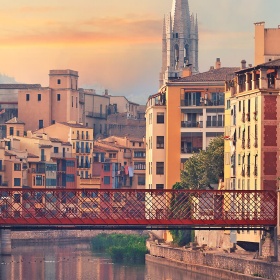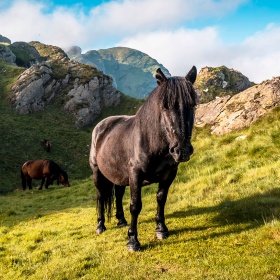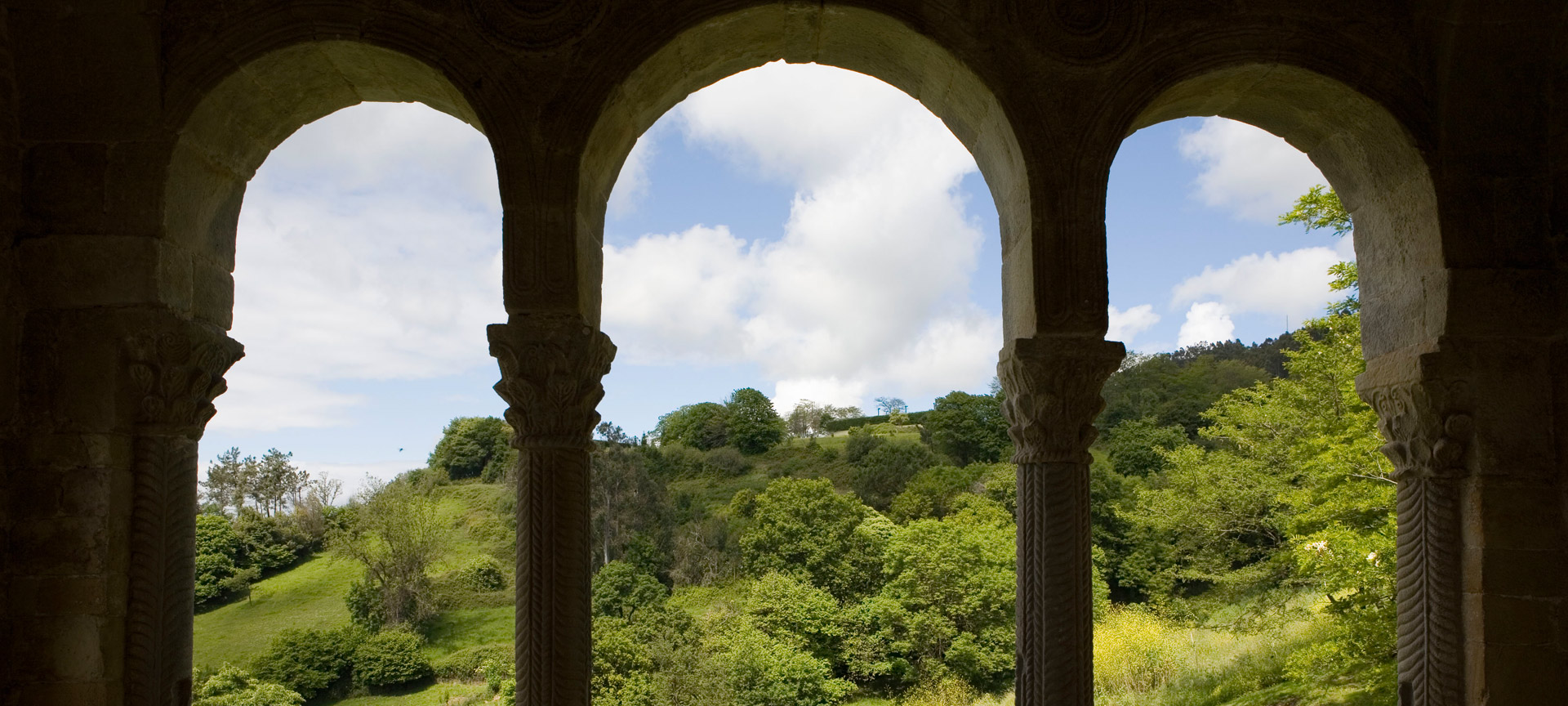Ancient Ovetum has been closely linked, since its founding (8th century), to the Asturian monarchy, becoming the capital of the Kingdom of Asturias. This fact has left a historic centre with an undeniable medieval flavour, which modernity has provided with a carefully designed urban layout that is easy to navigate.
An exceptional starting point for exploring examples of pre-Romanesque art, a World Heritage Site, the Costa Verde coastline, incredible natural landscapes where you can practice all kinds of sports, and of course, enjoy a first-class gastronomic culture.
A pedestrianised old town makes walking around Oviedo a pleasure, from the University to the Cathedral, and from the palace of the Marquis of San Feliz to the palace of Camposagrado. A route peppered with statues that emerge from the sidewalks in locations that allude to its history. For taking it easy, there are a multitude of squares, large and small, filled with pubs.The tower of the Oviedo Cathedral marks the beginning of any tour of the Asturian capital. Built in flamboyant Gothic style, its tower, rose window and entrance portico guard the greatest Asturian symbols. The chapel of San Miguel, or Holy Chamber, houses the Holy Ark, the Cross of the Angels and the Cross of Victory, relics also visited by pilgrims heading to the holy city of Santiago de Compostela. Some of these symbols appear on the coat of arms of Oviedo and the Principality of Asturias.In the surroundings of the cathedral we can see examples of some of the most important buildings in Oviedo: the Church of San Tirso, the Museum of Fine Arts and the Archaeological Museum, the latter housed in the former Palacio de Velarde and the Convent of San Vicente. Due to the impossibility of conserving numerous architectural and sculptural elements in the pre-Romanesque style (8th-10th centuries) in their places of origin, in buildings scattered throughout valleys, mountains and small villages, pieces of these churches are found in the Archaeological Museum. We will thus cover the entire history of Asturian art from the Bronze Age, also contemplating prehistoric, Roman, Visigothic and Romanesque collections.The innovative Asturian pre-Romanesque, precursor of the Romanesque and Gothic styles, is the exclusive heritage of these lands. In Oviedo itself, we have the opportunity to enjoy some of its most important buildings such as Santa María del Naranco, San Miguel de Lillo and San Julián de los Prados, all of which are national monuments. These places of worship and palaces, together with Santa Cristina de Lena (in the Asturian municipality of Lena), the Cámara Santa of the Cathedral and La Foncalada (a medieval fountain) have been declared UNESCO World Heritage Sites.The city of Oviedo is built around interesting squares that help us explore the city. The Cathedral Square takes us to the Plaza de Alfonso II el Casto, where the Valdecarzana-Heredia and Rúa palaces are located. In the Cimadevilla neighbourhood, the oldest part of the old town, we find the peculiar Plaza de Trascorrales, where the old market is located, and the Plaza de la Constitución. The eighteenth-century buildings of the Town Hall and the Church of San Isidoro stand here. And next to it, the columned Plaza del Fontán, a name also given to the old iron and glass market. The colourful houses that sit in this square also overlook the lively Daoíz y Velarde square. A multitude of porticoes open up in this area for us to pour natural cider (a low-alcohol drink made from apple juice).The University of Oviedo can be considered the last building in the old town before reaching the Ensanche. Its 16th-century Plateresque façade leads to a cloister that hosts a multitude of cultural activities throughout the year. The nearby facades of the palaces of the Count of Toreno and Camposagrado are worth a visit.This is where you start to see the Oviedo of the late 19th century, around the Plaza de la Escandalera and Campo de San Francisco park . The Regional Palace, the headquarters of the General Assembly of the Principality, the Caja de Asturias and the former Banco Herrero are located here. All of them with a French-influenced style. Also nearby is the Campoamor Theatre, where the Princess of Asturias Awards are presented every year. Continue along Uría Street to get closer to the more commercial side of Oviedo. Following one of the side streets, Gil de Jaz, you reach the old Provincial Hospice 18th century), now home to the luxurious Hotel Reconquista.At any point on the Oviedo tour we can get a taste of the region's gastronomy. Our tasting must include Cabrales, Vidiago and Gamonedo cheeses, Asturian fabes (white beans), pixín (monkfish), seafood and carne gobernada stewed meat. For dessert, the selection is enormous: rice pudding, frixuelos (a kind of crepe), almond cake...Oviedo, located in the centre of Asturias, offers us a tour of the entire province on different routes. Eastern Asturias offers us fishing villages such as Lastres and summer resorts with a strong historical flavour such as Ribadesella and Llanes, on the so-called Green Coast. Almost in Cantabria, Colombres preserves the heritage of emigrants who returned from the Americas. The intricate topography of the eastern inland offers us treasures such as the Picos de Europa National Park and Cangas de Onís, an enclave closely linked to the history of Asturias. We mustn't forget the emblematic Gijón, whose Parador de Turismo will welcome us in an old mill, Villaviciosa, or the Redes Natural Park to the south of the province.The western coast, as far as the territory of Galicia, is home to fishing villages such as Candás and Luanco, beautiful beaches such as Salinas and towns nestled between sea and the mountains such as Cudillero. All of them are good places where you can try Cantabrian seafood. Lighthouses and cliffs define the profile of the coast in Luarca, Navia and Tapia de Casariego, among kilometres of beaches. The western inland will take us to fascinating historic centres such as Grado or Salas, prehistoric caves such as Peña de Candamo, or landscapes where popular architecture blends in with nature, as in the Oscos region. Somiedo Natural Park and the Muniellos Biological Reserve tell us a lot about the natural and environmental richness of Asturias. And in all of them we can practice sports with low environmental impact.Routes where we can see hórreos (square wooden granaries on smooth stone legs with tiled roofs, used to keep food dry) or Americana architecture (exotic mansions built by Asturians who returned wealthy from the Americas), are just some of many. A branch of the Camino de Santiago, called the Camino del Norte, runs along the entire Asturian coast from Colombres to Tapia de Casariego. Meanwhile, Oviedo is also connected to Leon and Lugo. A tour that will take us closer to Asturian culture and its influence on the Jacobean route, through churches and pilgrim hospitals.The Cider Route, dedicated to the hallmark drink of this region, offers us a landscape full of apple trees, where we can visit factories, lagares (cider presses) and the Nava Cider Museum. Those interested in Asturian mining can explore the Nalón and Caudal valleys to get a closer look at these unique industrial landscapes. In El Entrego, you'll find the Mining Museum, where visitors can see a recreation of a mine. Mieres also shows us its layout, marked by the mining tradition. Nearby are the Sanctuary of the Martyrs of Valdecuna and, in Pola de Lena, the pre-Romanesque church of Santa Cristina, one of the jewels of Asturian art.
